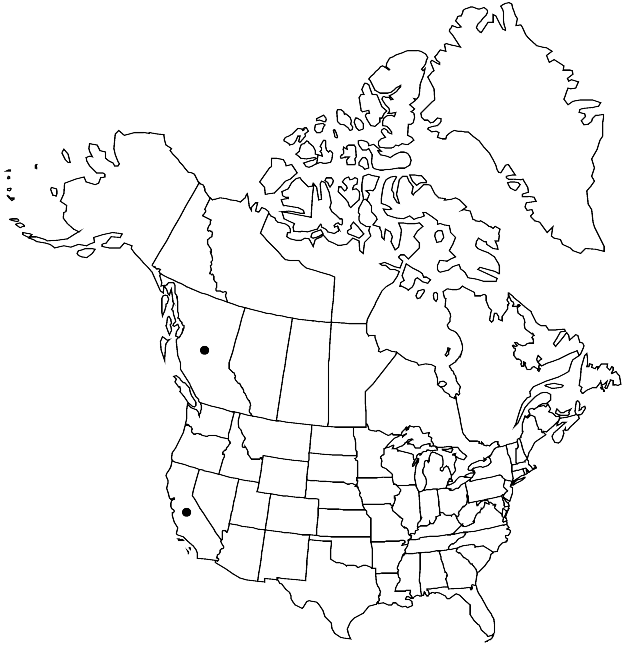Limnanthes macounii
Mem. Boston Soc. Nat. Hist. 4: 85. 1888.
Plants 2–7(–15) cm. Stems decumbent (sometimes upcurved apically). Leaves 1–7 cm; leaflets 3–15, blade ovate, margins irregularly toothed to 5-lobed. Flowers bowl- to bell-shaped; sepals (4) ovate, 3–4 mm; petals (4) white, cuneate to obovate, 4–5 mm, apex emarginate (reflexed in fruit); filaments 2–2.5 mm; anthers cream, 0.3 mm; style 3 mm. Nutlets light brown, 3 mm, tuberculate, tubercles light brown, broadly conical. 2n = 10.
Phenology: Flowering Mar-early May.
Habitat: Depressions in shallow soil on rocks, seepage areas, rocky coastal areas, open forests
Elevation: 0-200 m
Distribution

B.C., Calif.
Discussion
Of conservation concern.
Limnanthes macounii is native on Vancouver Island and adjacent islands in British Columbia from East Sooke Park to Victoria, Inskip, Chatham, and Trial islands, to Yellow Point, Saltspring, Gabriola, and Hornby islands. It grows in seasonally moist depressions (including edges of vernal pools) in acidic soils that often have a high nutrient content. The population in California is in an agricultural field in San Mateo County; first discovered there in 1998 (E. G. Buxton 1998), it appears to be persisting. Phylogenetic analyses suggest this may be an aberrant population of L. douglasii (S. Meyers, pers. comm.)
The angular and comparatively massive tubercles of the nutlets of Limnanthes macounii, with the base equaling 1/4–1/3 the width of the nutlet, are unique in the genus (H. H. Hauptli et al. 1978). Allozyme studies by R. V. Kesseli and S. K. Jain (1984b) showed that L. macounii had alleles found in no other taxa at three loci. M. S. Plotkin (1998) concluded that L. macounii should be included in L. douglasii based on ITS analysis. Because of its unique characteristics and highly disjunct distribution, L. macounii is maintained as a species here pending further study.